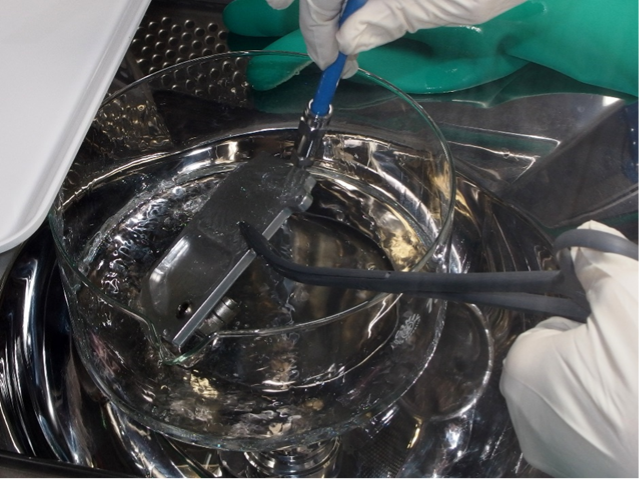Analyzing the number and nature of contaminants (particles, dust, and residue) on the surface of components or in fluids is vital for product performance and safety in many manufacturing applications. Industries such as automotive, aerospace, and medical device manufacturing have specific standards and methods for evaluating the cleanliness of components.
The first step of cleanliness inspection and analysis begins with taking a sample from a component. The exact sampling method used depends on the industry and application. In a previous post, we described the general sampling workflow and types of sampling methods in component cleanliness inspections.
Now our blog series will go into more detail on each sampling method, starting with the washing method.
What Is the Washing Method in Component Cleanliness Inspections?
The technical cleanliness of components is tested indirectly because the products under examination are not inspected directly with the microscope. Microparticulate contaminants are removed from components by washing, rinsing, or in an ultrasonic bath. Using the washing method, residues and particles are extracted from the component and into a rinse fluid.
Note: For most cases in the automotive industry, the extraction of particles via liquid is a suitable technique. Make sure the liquid used for extraction is compatible with the component material, filtration device, and filter membrane.
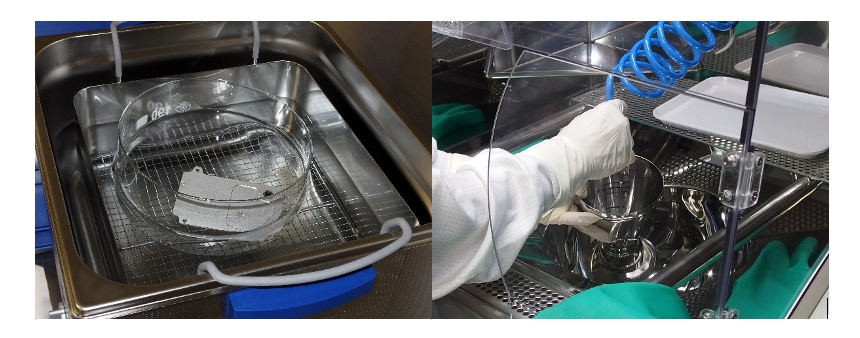
Particles are extracted from components for a technical cleanliness inspection using the washing method. The images show examples using an ultrasonic bath (left) and washing a part in an extraction cabinet (right).
After extraction, the rinse liquid is filtered to deposit the particles on a filter membrane. The filter must be dried for further analysis. The rinse fluid or oil can be removed in a desiccator, a drying oven, or by using dedicated equipment.
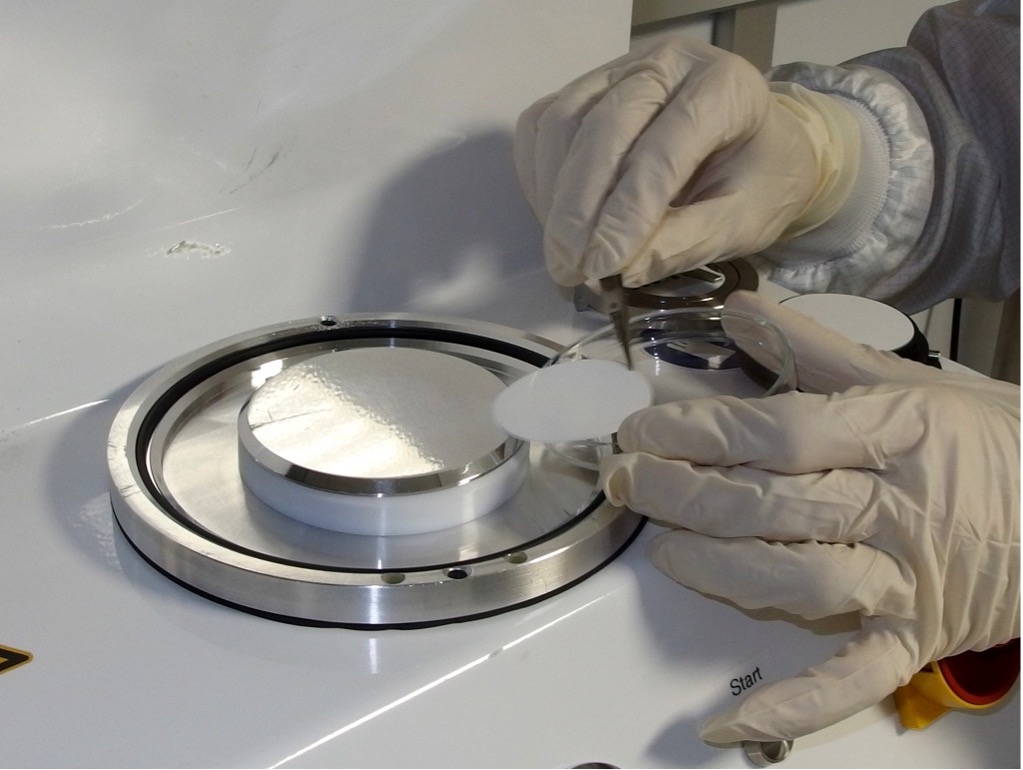
A filter is dried to prepare it for a cleanliness inspection.
Sometimes the next step is weighing the dried filter membrane using an analytical balance with an integrated windshield. A comparison of its weight with and without contaminants yields a first rough estimate on the amount of contamination on the selected parts. However, this gravimetry data is optional and does not provide the size, shape, and other properties of the particles.
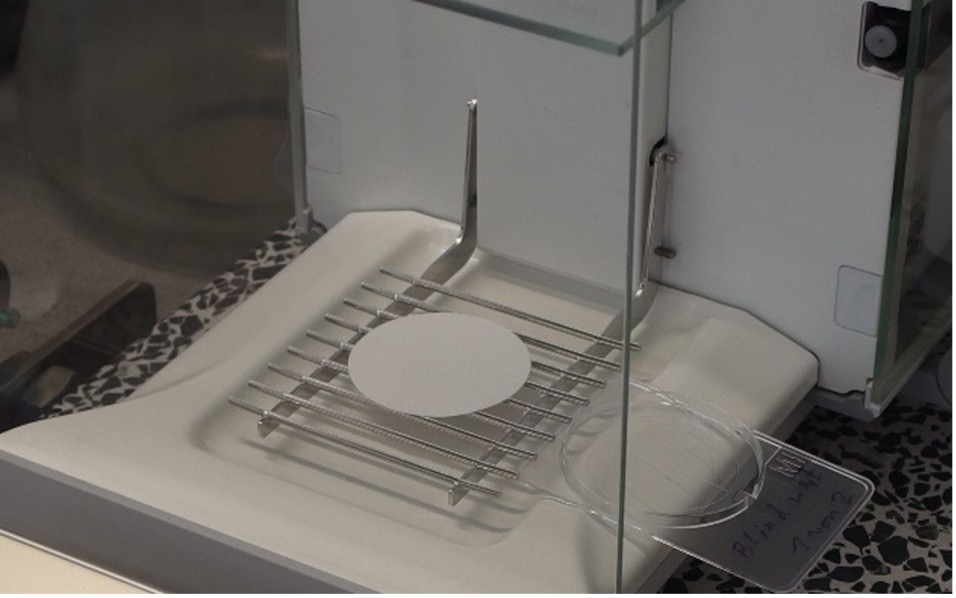
A filter membrane is weighed on a balance with an integrated windshield.
Further analysis with a microscope-based system provides detailed information on the number of particles, particle size distribution, and particle characteristics for technical cleanliness standards. To perform the visual analysis, an inspector clamps the filter membrane on the sample holder, then mounts the holder on the microscope’s stage for image acquisition and analysis.
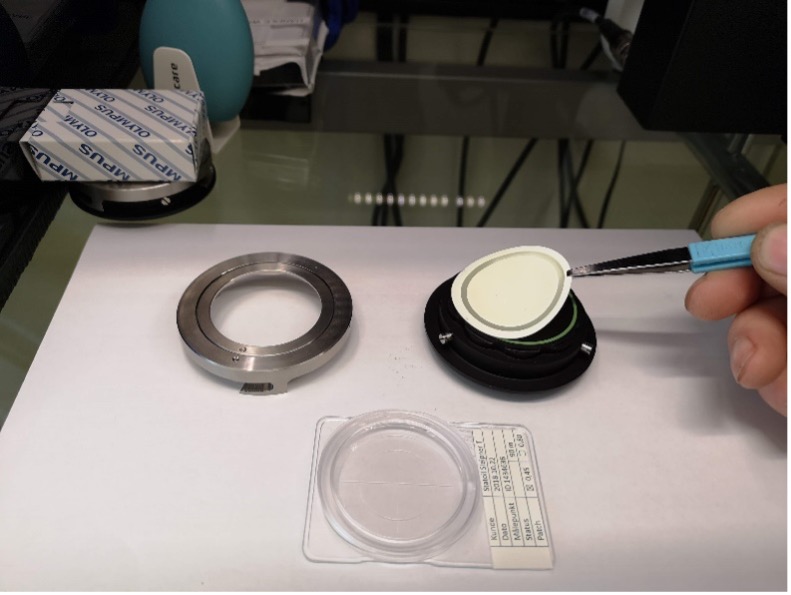
A filter membrane is mounted on a sample holder.
For the visual analysis, we recommend using a microscope system with automation and guided workflows, so users of all experience levels can obtain reliable data from the images. Learn more in our post, 7 Capabilities That Make Technical Cleanliness Inspections Easy for Novice Operators.
Types of Filter Membranes Used for the Washing Method
Filter membranes come in various diameters. The default sample in our OLYMPUS CIX100 technical cleanliness system is a filter membrane with a diameter of 47 mm. Dedicated sample holders are available for membranes with diameters of 47 mm, 25 mm, and 55 mm.
The system’s software now includes inspection area presets tailored to the different membrane sizes, enabling users to automatically adjust the scan size with the click of a button. The software also includes predefined parameters for each sample type so that even inexperienced operators can obtain results with ease.
The size of the filter membrane used depends on the application and industry:
- Filter membranes with a 47 mm diameter are often used in the aerospace, automotive, and oil industries. This is the default filter diameter used in most cases.
- Membranes with diameter of 25 mm are sometimes used for oil analysis.
- Filter membranes with diameter of 55 mm are used in machine maintenance and in production with a large workload of particles.
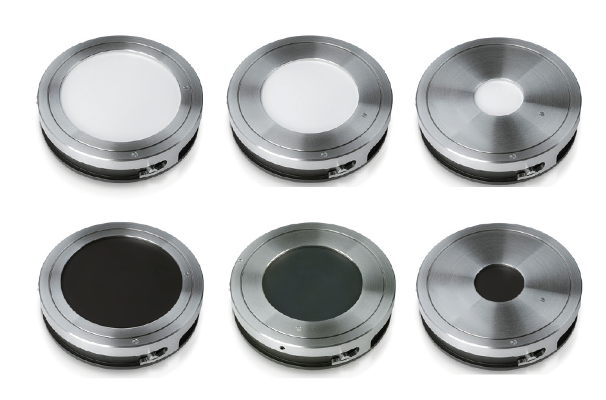
Circular sample holders with white and black backgrounds for filter membranes with diameters of 25 mm (left), 47 mm (middle), and 55 mm (right).
Along with the various diameter options, our dedicated sample holders are available in black and white backgrounds to suit a variety of applications. Here are some of the ways the backgrounds are used:
Black backgrounds: If an aggressive chemical is used to rinse off particles, some residue from the rinse fluid could remain on the filter membrane. The sample holder with a black background consists mainly of anodized aluminum, making it largely inert to chemical substances (i.e., it does not react chemically). This is an advantage when examining oil, for example, because oil is often diluted with clean petroleum for better filtering on cellulose membranes. Solvent residues on the filter membranes could destroy the white background of the holder.
White backgrounds: A white background provides an advantage when using woven mesh filters. Mesh filters are often used to speed up the filtering process, because the rinsing liquid can drain much faster through the filter membrane. When examining a mesh filter, the microscope can look through the mesh at the sample holder. On a black background, black spots would appear through the weave pattern and be misinterpreted as particles. For this reason, a sample holder with a white background is recommended when examining mesh filters.
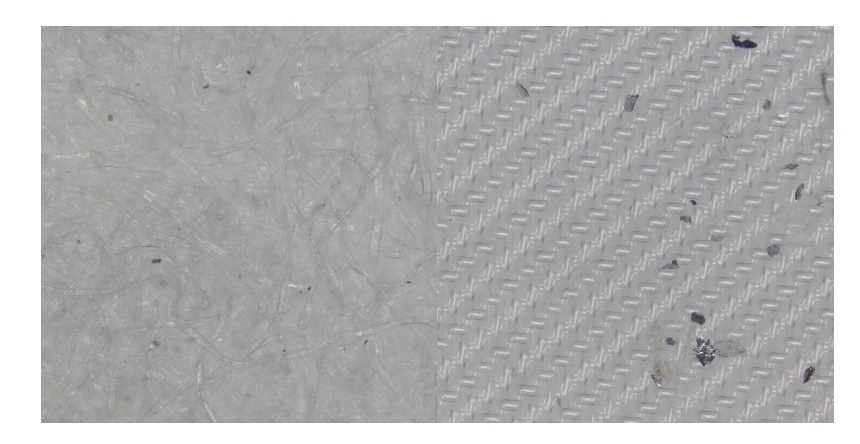
Images of filter membranes taken on a white background. The mesh filter membrane (right) has a distinct weave pattern, while the cellulose filter membrane (left) does not allow the filter background to show through.
What’s Next―Learn about Other Sampling Techniques for Cleanliness Inspections
Stay tuned for more blogs on sampling techniques in technical cleanliness inspections. In our next post, we will cover direct liquid filtration. To follow along and see other helpful posts on cleanliness analysis, make sure to subscribe to the InSight blog today. You can also check out our brochure on the basics of cleanliness inspection to learn more about the standard workflow.
Related Content
Common Sampling Techniques for Technical Cleanliness Inspections
A Picture Is Worth a Thousand Words in Component Cleanliness Inspections
